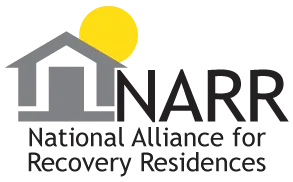It was supposed to be one time, maybe two for those long on-call nights. You and your husband have been spending hours in the Intensive Care Unit, tending to the chaos as COVID patients kept filing in. Your husband suggested a way to stay awake and alert for longer so you could provide more help – methamphetamine. His college roommate still had a supply and was able to get some to your husband. You are reluctant, but as head nurses in the department, you both needed all the help you could get to keep up.
You both stuck to the agreement, only using meth together few and far between, only on the nights when the influx of patients was out of control. Now that the pandemic has ended, you both have returned to a state of normalcy. But lately, your husband has been acting erratically, his mood changing and you notice he doesn’t seem to look as “fresh” as he used to. His skin has some scarring and his teeth have really yellowed. What if he didn’t stick to your agreement? Is he still using meth?
In Pinellas and Pasco Counties, 214 deaths were caused by meth in 2020. It is believed that 10-14% of medical physicians are managing a substance use disorder of some kind at this time, similar to the general population. At Tranquil Shores, we understand that seeking help can be seen as weak or detrimental to careers. We have worked with many career-driven individuals, and tailor our treatment to reflect the importance of work but also yourself. Our goal is to provide education for families and loved ones to understand what their spouse or child may be going through with addiction. Today, we are talking about the signs of meth addiction and what you can do to help your loved one.
Do You Know What Meth Is?
Methamphetamines, or “meth,” are dangerous and highly addictive street drugs in the same class as cocaine. There are several different ways that meth can be ingested. The most common are snorting, smoking, and injecting. Because meth is a synthetic drug, it’s created with harmful chemicals that are detrimental to the body.
Not only does meth affect the body physically, but it also affects mental well-being. Meth is a stimulant, meaning it speeds up the central nervous system. It releases chemicals in the brain that trigger pleasure and also give a burst of energy.
Feeling the Impact: Signs and Symptoms of Meth Addiction on the Mind and Body
There are psychological, physical, and behavioral signs of meth addiction. There are also short-term and long-term symptoms that come with the physical signs.
Psychological and Behavioral Signs
Meth is one of the most dangerous drugs because of its psychological toll on the body. The first and most common symptom of meth use is no longer being interested in things that were once most important in the person’s life. It could be things they love to do, like working out or cooking, it could be their job or goals for their career, and it could also be people they love and care about.
Some of the most common psychological and behavioral signs include:
- Sudden outbursts/mood swings
- Hyperactivity
- Twitching, facial tics, and jerky movements
- Irregular sleep patterns
- Agitation
- Paranoia
- Hallucinations
- Memory Loss
- Depression
- Extreme elation
- An inability to relax
- Decreased appetite
- Inability to maintain attention
A familiar term for when these psychological signs combine is known as “tweaking.” Tweaking is a 3-15 day span when feelings of insomnia and anxiety collide. This happens at the end of a meth binge when a high is no longer achievable.

Physical Signs and Symptoms of Meth Addiction
Meth is one of the more well-known substances to have significant physical signs of dependence. The most common sign of meth is tooth decay, which some refer to as “meth mouth”.
Other physical signs of meth use disorder in friends and loved ones include:
- Dilated pupils
- Noticeable and sudden weight loss
- Skin sores
- Rapid eye movement
- Burns, particularly on the lips or fingers
- Flushed/itchy skin
- A weakened immune system and frequent illnesses
These signs are generally short-term, but a few other symptoms could occur longer from using meth. Seizures, strokes, and heart attacks can occur even after the first use or 500th use of meth. Long-term health problems including heart disease, liver failure, high blood pressure, and respiratory infections such as COPD are often seen in those with a meth use disorder.
Signs of Meth Withdrawal
Meth withdrawal is different in each person. Typically, they begin in as little as 8 hours after the last dose and can last up to a week. Some common meth withdrawal symptoms are:
- Fatigue
- Psychosis
- Irritability
- Weight gain
- Hallucinations
- Chills
- Insomnia followed by hypersomnia (sleeping too much)
- Depression and anxiety
- Cloudy thinking and judgment
- Anhedonia (loss of ability to feel pleasure).
- Withdrawing from others
- Cravings
Going through a meth withdrawal can be difficult and unpleasant, however, withdrawal is not typically life-threatening. Meth affects the way the brain functions, and withdrawal can cause a spiral in mental health. If thoughts of self-harm, harming others, or suicide occur, seek medical attention immediately.
Spotting Meth Paraphernalia
Paraphernalia is any equipment used to produce, consume, and conceal illicit substances. There are several items used to consume meth that are purchased and homemade.
The following are some of the most common:
- Spoons: used for cooking meth by placing the powder into it and heating it with a lighter
- Straws or hollowed pens: used to snort meth
- Bongs: commonly used to smoke marijuana but also can be used for meth
- Shoelaces, an elastic lanyard, or a hairband: used to plump up veins before injecting
- Glass pipes: used to place meth in and heat it for smoking
- Aluminum foil: users place meth in the crease, heat the foil (to evaporate it) and inhale the smoke
- Fentanyl test strips: used to test substances such as meth and see if fentanyl was used for cutting
While fentanyl test strips are a helpful tool in harm reduction and preventing accidental overdoses, they are illegal in the state of Florida and are considered paraphernalia.

Treating Meth Addiction: Getting Help
Facing meth use disorder is a huge leap that should be met with love and support. Chronic meth use rewires the brain, and can make once pleasurable activities seem mundane and lackluster. With the help of a program to recover from meth addiction that utilizes therapy, the development of coping skills, and grace for yourself, recovery is 100% achievable.
Grappling with managing a meth use disorder and the stresses of life does not have to be permanent. Tranquil Shores makes sure that your needs and goals are met by keeping our client-to-counselor ratio at 3:1. This gives our clients the one-on-one time they need to explore the root causes of addiction within themselves and address any past traumas. Electronic devices are allowed at our facility so there is no worry about missing work. Call us today at 727-591-4119 to learn more about our unique facility and program.
FAQs About Meth
What are the top three most common signs of meth addiction?
The most common signs of meth addiction are mood swings, weight loss, and tooth decay. Skin sores are also a common sign.
How is meth consumed?
Meth can be snorted, injected, smoked, or ingested.







